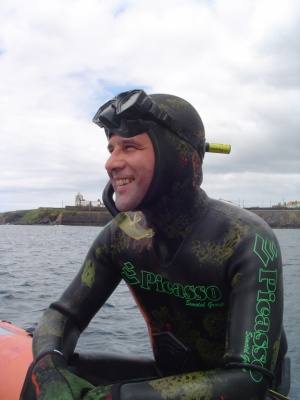Garcia, C. & Barreiros, J.P. (2018) Are underwater archaeological parks good for fishes? Symbiotic relation between cultural heritage preservation and marine conservation in the Azores.
Regional Studies in Marine Science,
21, 57-66. DOI:10.1016/j.rsma.2017.10.003 (IF2018 1,462; Q3 Marine & Freshwater Biology)
The Underwater Archaeological Parks (UAP) of the Azores are a cultural heritage protection initiative and an opportunity to promote fruition between archaeological sites and biodiversity. Respecting UNESCO’s “Convention on the Protection of the Underwater Cultural Heritage” principles, the UAPs were classified for the first time in 2005 and are unique in the Portuguese context. Due to the autonomy that this ultra-peripheral European Region has in terms of cultural heritage management, this structure arises from a specific law in 2005 formulated by initiative of the Azores Regional Government. At the same time, the archipelago’s marine biodiversity richness has become one of the most attractive elements for tourism in the islands.
The main goal of this paper is to reflect on these two important identity elements of the Azores: on a cultural and environmental level. We try to understand if there is any interaction and symbiotic relation between the UPAs and their growing biodiversity due to the classification. For this purpose, the Angra UAP in Terceira and Dori UAP in S. Miguel will be presented.
In both cases, the cultural element was mandatory for the classification and protection of the sites. This first attempt to combine marine biota data together with archaeological data proposes to create a precedent. In fact, the empirical perception of archaeologists, biologists and divers who visit the parks is that the biodiversity has increased with the protection measures. However, we need elements that are more accurate in order to define that.
The main goal of this paper is to identify the marine species present in Angra for the first time. It will also create a reference for future evaluation regarding the symbiotic relation between the two UAP dimensions. We believe this has a positive effect on the defence of the natural and cultural heritage of the Azores.

